Products
Klinger Kloppe innovates to meet excellence in Petrochemical Process Technology. Our cutting-edge solutions redefine industry standards, delivering exceptional efficiency, reliability, and sustainability. From pioneering catalysts to state-of-the-art process optimization tools, we are committed to shaping the future of petrochemical manufacturing.

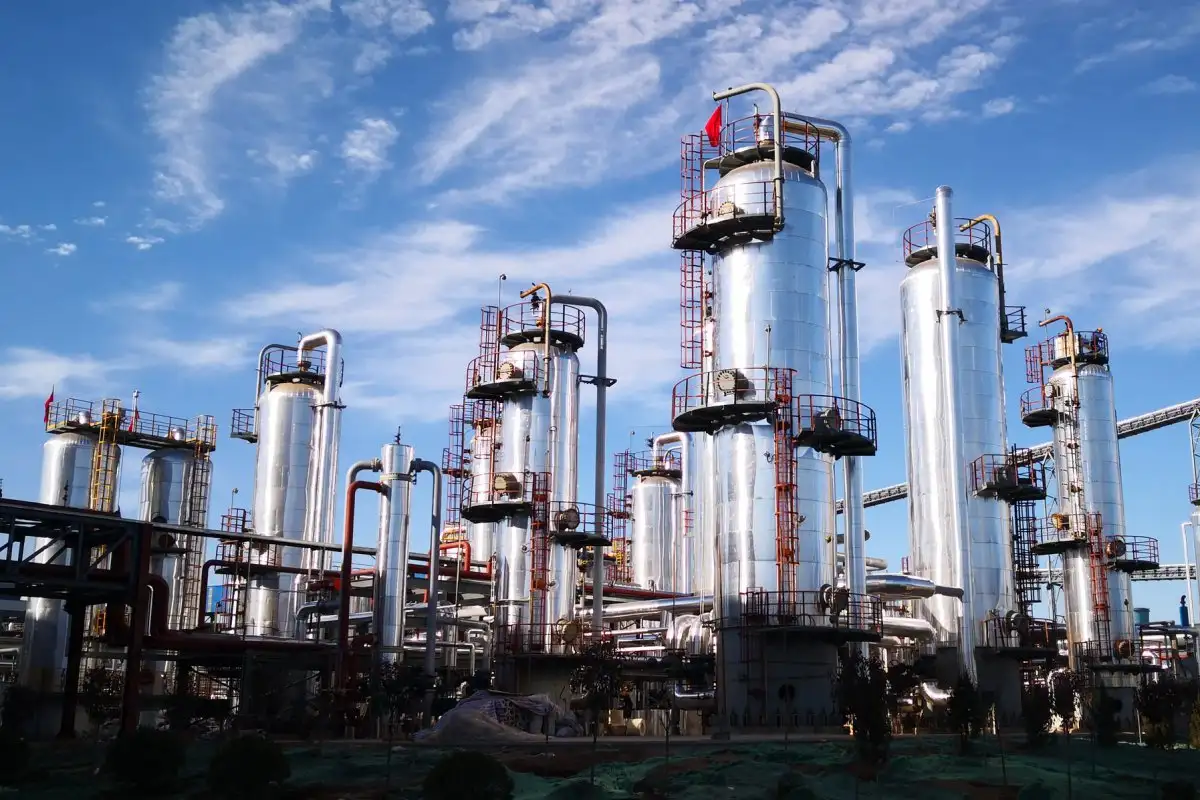
Methanol Production Plant
Methanol, also known as methyl alcohol, is a universal chemical compound used as a feedstock for diverse industrial applications, including the production of formaldehyde, acetic acid, and other chemicals, as well as for use as a fuel and solvent. Methanol is typically produced through a chemical process called methanol synthesis.
Building and operating a methanol production plant concerns several considerations:
Methanol Synthesis: The core of the production process is the methanol synthesis reaction, known as the "Haber-Bosch process." It involves the catalytic reaction of carbon monoxide and hydrogen at high temperature and pressure.
Gas Preparation: Natural gas is generally processed to remove impurities such as sulfur compounds, water, and heavier hydrocarbons before being used as a feedstock. It guarantees the quality and efficacy of the methanol synthesis process.
Syngas Generation: A mixture of carbon monoxide and hydrogen is created by passing feedstock gas through steam reforming process. The ratio of CO to H2 in the syngas is vital for the methanol synthesis reaction.
Methanol Synthesis Reactor: The syngas is fed into a methanol synthesis reactor, where it comes into contact with the catalyst. The reaction takes place at high temperatures and pressures.
At Klinger Kloppe, we are committed to shaping the future of the chemical industry by delivering cutting-edge methanol plant solutions. As a trusted manufacturer with a rich legacy of innovation, we empower businesses worldwide with efficient, sustainable, and high-performance methanol production facilities.
Process Technologies: Every project is distinctive, and we take pride in our mastership to create customized methanol plant solutions that align with your explicit requirements and objectives.
State-of-the-Art Technology: Our devotion to staying at the forefront of technological betterment allows us to integrate the latest innovations into our plant designs, assuring optimal efficiency and performance.
Comprehensive Support: From a vision to commissioning, we provide comprehensive support throughout the project lifecycle, ensuring a seamless experience for our clients.
Design and Engineering: Our team of expert engineers translates your project vision into detailed, precision-engineered methanol plant designs that prioritize safety, efficiency, and environmental responsibility.
Fabrication and Construction: We bring your design to life through diligent fabrication and construction processes, leveraging our state-of-the-art manufacturing facilities and skilled workforce.
Quality Assurance: Quality is non-negotiable. We enforce strict quality control standards at every phase of manufacturing, ensuring that your methanol plant exceeds expectations.
Technology Integration: We leverage the latest technological advancements to optimize your methanol plant's performance, energy efficiency, and environmental impact.
After-Sales Support: Our commitment to your success doesn't end with plant delivery. We provide ongoing support, maintenance, and optimization services to ensure your plant's long-term performance.

Ammonia Production Plant
Ammonia is a colorless and pungent gas, composed of one nitrogen atom and three hydrogen atoms. It is synthesized through the Haber-Bosch process and finds widespread use as a key component in fertilizers, industrial refrigeration, cleaning products, synthetic fibres, and more. While valuable for various applications, ammonia requires careful handling due to its irritant properties and potential hazards. Excess ammonia release can also contribute to water pollution and environmental concerns, emphasizing the need for responsible management of its production and usage.
The typical procedure for producing ammonia is commonly known as the Haber-Bosch method. This method is essential for generating ammonia in large industrial quantities, mainly for agricultural purposes as a vital component in fertilizers.
Gas Compression: Both the nitrogen and hydrogen gases need to be compressed to increase their pressure, which is necessary for the subsequent chemical reaction to take place efficiently.
Synthesis Reaction: The compressed nitrogen and hydrogen gases are then introduced into a reactor where they undergo a catalytic reaction to form ammonia. The reaction is exothermic (releases heat). The reaction is reversible, meaning that ammonia can be formed but can also decompose back into nitrogen and hydrogen.
Temperature and Pressure Control: The Haber-Bosch process operates at elevated temperatures and pressures. The optimal temperature and pressure conditions are chosen to achieve a compromise between reaction rate and equilibrium conversion.
Ammonia Separation: As the reaction proceeds, ammonia is formed, but it is also in equilibrium with the reactants (nitrogen and hydrogen). To maximize ammonia production, the ammonia is continuously removed from the reaction mixture. This is often done through a process called fractional distillation, where the ammonia is separated from the unreacted nitrogen and hydrogen.
Purification and Storage: The separated ammonia is purified to remove any remaining impurities and then stored for various applications.
Discover the future of ammonia production with Klinger Kloppe – your trusted partner in advanced engineering solutions. We're proud to introduce our state-of-the-art ammonia production plant, a beacon of innovation and sustainability that is set to reshape industries worldwide.
Innovation at Its Core: At Klinger Kloppe, innovation drives us. Our ammonia production plant integrates cutting-edge technology, ensuring exceptional efficiency, product quality, and environmental responsibility.
Sustainable Solutions: We are committed to reducing your carbon footprint. Our plant boasts eco-friendly designs, energy-efficient processes, and stringent emission controls, aligning with your sustainability goals.
Tailored to You: We understand that each business is unique. Our expert team collaborates closely with you to create customized ammonia production processes that precisely match your industry requirements.
Unwavering Reliability: Count on Klinge Kloppe's ammonia production plant for consistent performance and uninterrupted output, empowering your operations to flourish.
Excellence in Quality: Quality is non-negotiable. Our plant adheres to rigorous testing and quality assurance practices, guaranteeing ammonia of the highest caliber.
Comprehensive Support: From inception to operation, our dedicated support team offers comprehensive assistance. We stand by you, ensuring seamless operations and unrivaled peace of mind.
Ammonia is the cornerstone of countless industries, and Klinger Kloppe is leading the charge. Whether you're in agribusiness, chemical manufacturing, or beyond, partnering with us means embracing a future of boundless possibilities.
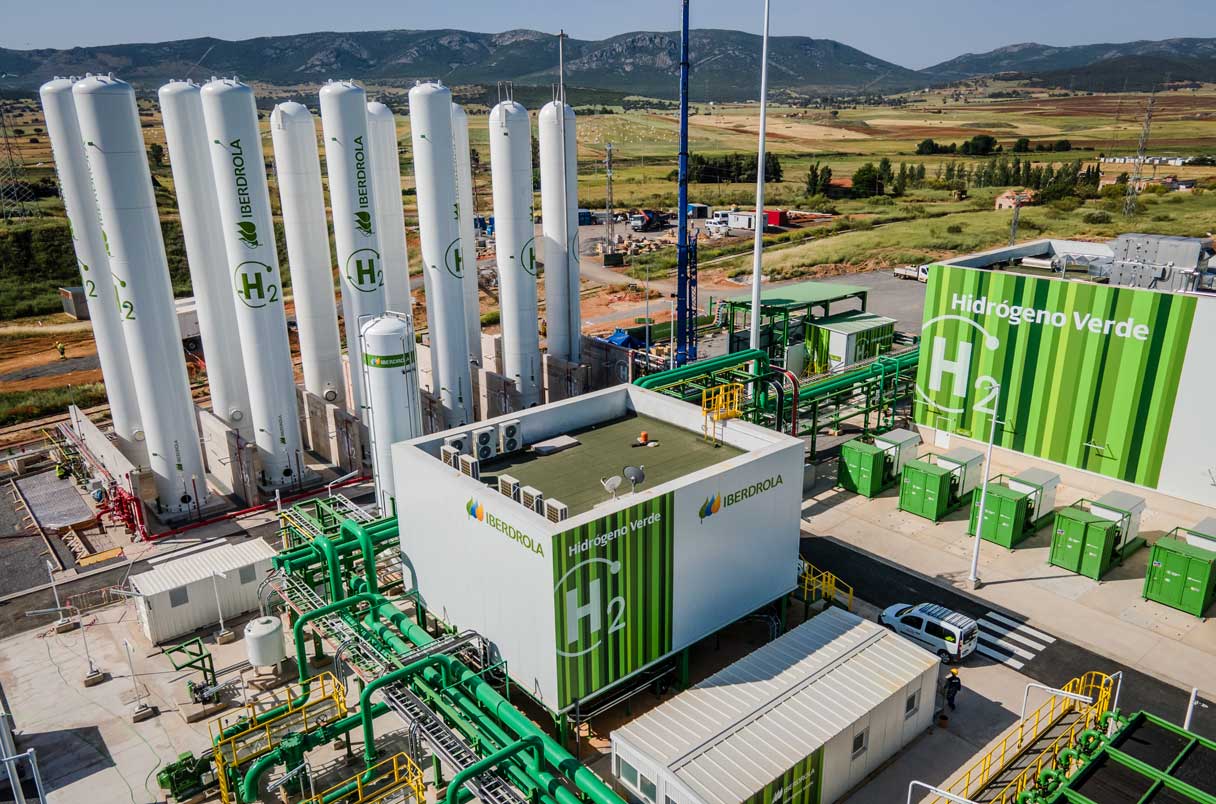
Hydrogen Production Plant
Hydrogen which is the lightest and most prevalent element exists as a colorless and odorless gas with fundamental importance. It is manufactured using techniques such as steam methane reforming and electrolysis and plays a critical role as a key industrial building block, utilized in ammonia creation, petroleum refining, and chemical production. Its adaptability extends to green energy applications, including its use in fuel cells for generating electricity and its potential as a low-emission fuel.
Water Electrolysis: In this method, water is split into hydrogen and oxygen gases using electrical energy. Electrolysis can be powered by renewable sources to produce hydrogen.
Thermochemical Processes: These high-temperature processes involve using heat to trigger reactions that release hydrogen from various materials.
Purification and Separation: The hydrogen gas produced may contain impurities and other byproducts, depending on the method used. Purification processes are employed to remove these impurities, resulting in high-purity hydrogen gas.
Compression: The produced hydrogen gas is often compressed to increase its pressure, making it suitable for storage and transportation.
Storage and Distribution: Hydrogen is stored in various forms, such as compressed gas, liquefied hydrogen, or in solid storage materials. Distribution networks and infrastructure are critical to transport the hydrogen to end-users, such as industrial facilities or refuelling stations for fuel cell vehicles.
Klinger Kloppe introduced the innovative hydrogen generation facility. Serving as a symbol of eco-friendly technology, we are thrilled to acquaint you with a realm where renewable energy converges with top-tier industrial achievement.
Advanced Technology: Klinger Kloppe’s hydrogen production facility incorporates the latest breakthroughs, guaranteeing effective, top-notch hydrogen creation that propels your business ahead.
Environmentally Leader: Our plant employs eco-friendly production methods, reducing carbon emissions and aligning with your environmental objectives.
Customized Solutions: Our skilled team collaborates closely with you to create hydrogen production processes tailored perfectly to your industry needs.
Reliable Performance: Rely on Klinger Kloppe's hydrogen production plant for steady output and trustworthiness, empowering your operations to flourish without concessions.
Unwavering Quality: Quality is the cornerstone of our plant. Thorough testing and quality assurance ensure that the produced hydrogen meets the loftiest industry benchmarks.
Comprehensive Support: Our devoted support team stands with you from initial stages to operation which guaranteeing seamless operations and a worry-free experience throughout your journey.
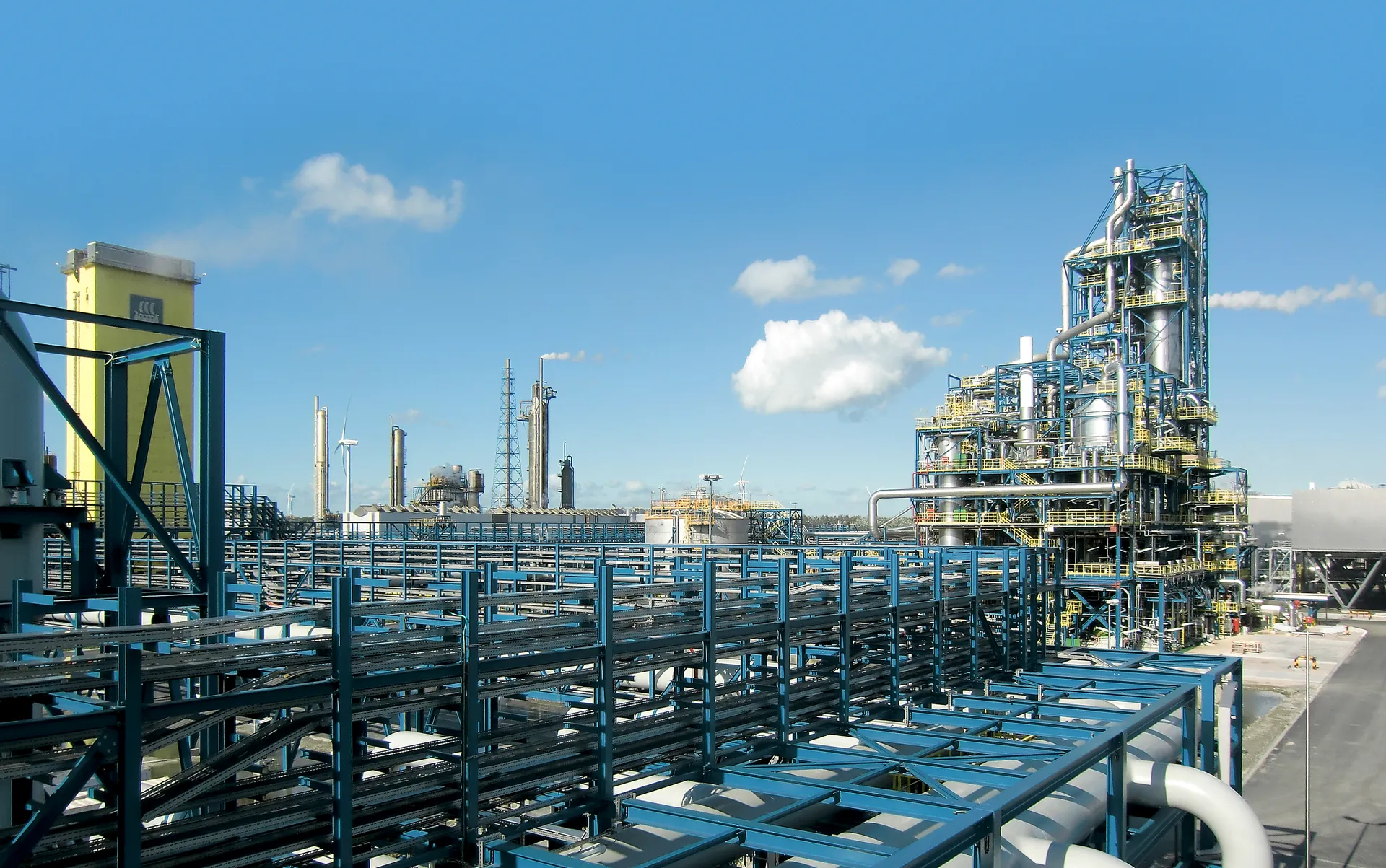
Urea Production Plant
Urea is an organic compound containing nitrogen that is widely acknowledged for its significant roles in both agriculture and industry. Urea stands as a vital nitrogen-rich fertilizer that enhances the growth of crops and the fertility of the soil. Beyond its agricultural applications, it acts as a precursor in the production of chemicals, playing a role in the creation of plastics, adhesives, and pharmaceuticals. Moreover, urea's moisturizing properties make it valuable in skincare products, and it also contributes to the reduction of emissions from diesel engines through its use in diesel exhaust fluid (DEF). With its versatile applications, urea underscores its importance in various sectors, playing a role in agricultural productivity, chemical synthesis, and environmental preservation.
Ammonia Production Process: Ammonia is a key ingredient in urea synthesis. Its creation often follows the Haber-Bosch method, where nitrogen gas and hydrogen gas react over a catalyst under high temperatures and pressures.
Carbon Dioxide Generation Process: Carbon dioxide is sourced from external avenues, like carbon capture systems, or internally generated through processes such as steam reforming of natural gas.
Ammonia and Carbon Dioxide Reaction: Ammonia and carbon dioxide are introduced into a reactor, where they chemically react to form ammonium carbamate, an intermediary compound.
Decomposition Process: Ammonium carbamate is heated and breaks down through a reverse reaction into urea and water.
Separation: Urea is separated from the reaction mixture, often by reducing the temperature to induce condensation and the precipitation of urea crystals.
Purification of Urea:
Crystallization: Urea crystals are isolated from the liquid mixture, washed, and then processed in a centrifuge to remove excess liquid.
Drying: Wet urea crystals are dried to eliminate any remaining moisture.
Prilling or Granulation: Urea can be converted into prills or granules, which are simpler to handle and distribute.
Packaging and Distribution: The final urea product, whether in solid form or as a solution, is packaged and prepared for distribution to agricultural markets or other sectors.
Experience Klinger Kloppe's advanced urea manufacturing plant, where innovation converges with sustainability to mold a more environmentally conscious future for industries worldwide. Embark on a journey of opportunities as we redefine urea production with excellence and a commitment to the environment.
Innovative Solutions: At Klinger Kloppe innovation is the driving force behind our urea production plant. Our advanced processes ensure high-quality urea while staying at the forefront of industry developments.
Sustainable Excellence: We prioritize environmental stewardship. Our plant integrates eco-friendly designs and practices, reducing carbon footprints and aligning with your sustainability goals.
Customized Approaches: Our expert team collaborates closely with you to tailor urea production processes that fit seamlessly into your industry requirements.
Reliability Unleashed: Trust in Klinger Kloppe's urea production plant for consistent, reliable output, empowering your operations to flourish without compromise.
Unwavering Quality: Quality is our commitment. Rigorous testing and quality control ensure that the urea produced meets the highest industry standards.
Full-Spectrum Support: From concept to operation, our dedicated support team is with you every step of the way, ensuring seamless operations and unwavering peace of mind.
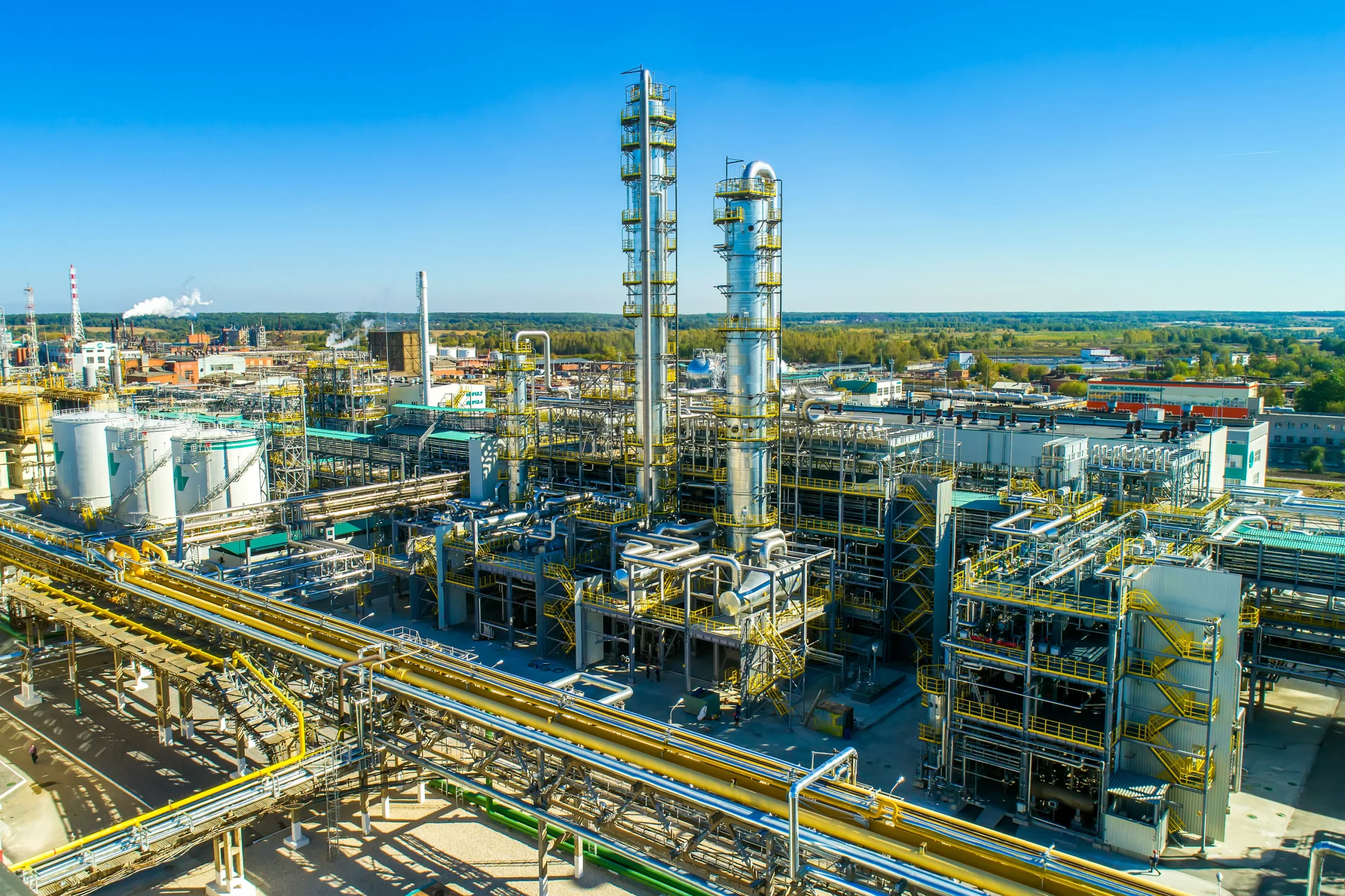
Formaldehyde Production Plant
Formaldehyde is a colorless, pungent gas with a linear molecular structure, composed of one carbon atom, two hydrogen atoms, and one oxygen atom. Primarily produced through methanol oxidation, formaldehyde finds applications in manufacturing resins, polymers, textiles, and paper, as well as serving as a disinfectant, preservative, and laboratory fixative. Despite its industrial importance, formaldehyde poses health concerns as an irritant and potential carcinogen, warranting careful handling. Additionally, its release into the environment contributes to indoor air pollution and can play a role in the formation of ground-level ozone.
Catalytic Process: The methanol-air mixture enters a reactor containing a catalyst, usually made of silver or metal oxide. This catalyst helps manage the controlled change of methanol into formaldehyde, and water is produced on the side.
Gas Cooling: The gas mixture leaving the conversion reactor is rapidly cooled to change formaldehyde and other products into a liquid state.
Separation: The condensed mix is then sorted into different parts, mainly focusing on formaldehyde.
Purification and Stabilization:
Eliminating Byproducts: Any unwanted elements, methanol that didn't change, or other products are taken out from the condensed mixture.
Stabilization: To prevent formaldehyde from grouping up into paraformaldehyde, a bit of methanol is often added for stability.
Storing and Distributing: The cleaned formaldehyde is kept and readied for being sent out to different industries that need it as a starting material for their processes.\
Klinger Kloppe's formaldehyde production plants are designed to meet the specific needs of our customers. We offer a variety of plant sizes and configurations to choose from, so you can find the perfect plant for your production requirements.
High Standard: Our formaldehyde production plants are designed to meet the highest standards of quality and safety. They are also highly efficient, which means that you can save money on your production costs.
Highly Efficient: Our formaldehyde production plants are also highly efficient. We use the latest technology to ensure that our plants produce formaldehyde in the most cost-effective way possible.
Reliable Support: We also offer a wide range of support services. We can help you with everything from plant design and engineering to plant commissioning and start-up.
Quality Material: Klinger Kloppe's formaldehyde production plants are made with high-quality materials and components. This ensures that they are durable and reliable, even in harsh environments.
Financing Solution: Klinger Kloppe offers a wide range of financing options to make it easy for you to purchase a formaldehyde production plant. We can help you find a financing solution that fits your budget and your needs.
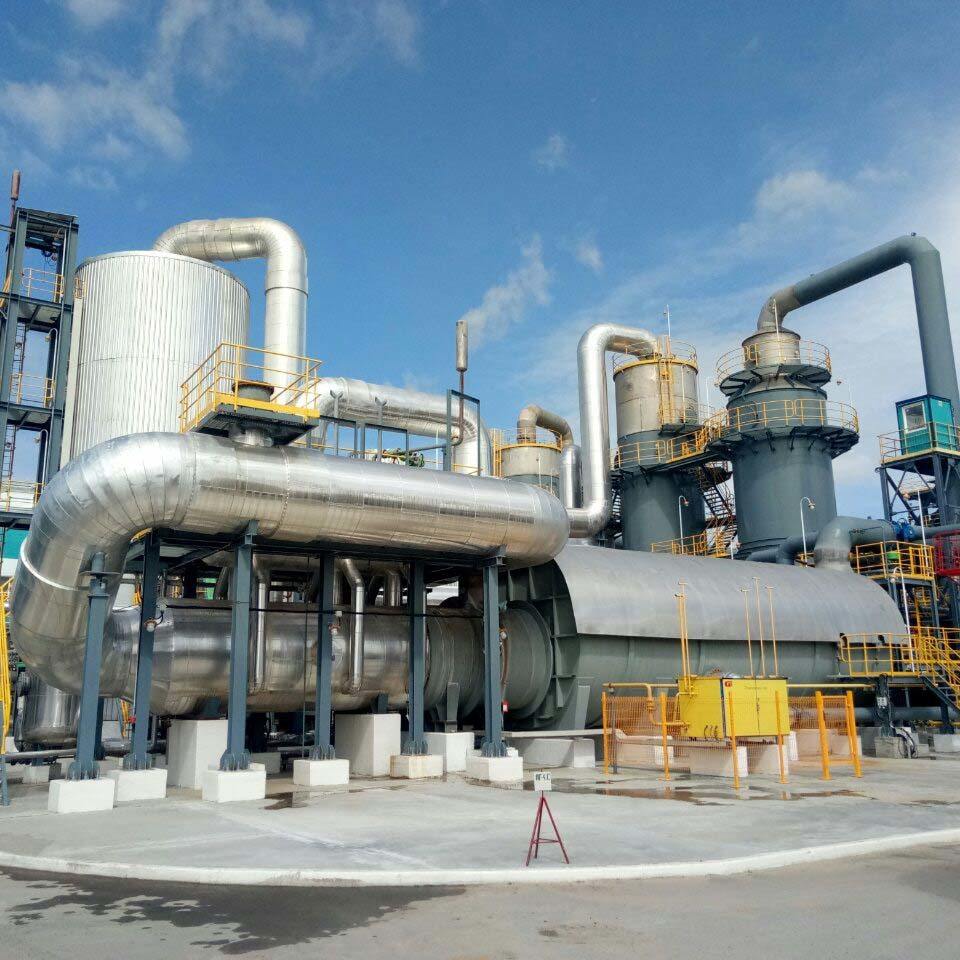
Sulfuric Acid Production Plant
Sulfuric acid is a highly potent mineral compound consisting of two hydrogen atoms, one sulphur atom, and four oxygen atoms. Widely recognized for its corrosive nature and strong acidity, it plays a pivotal role in numerous industrial applications. Manufactured through the contact process by oxidizing sulphur dioxide and absorbing sulphur trioxide in concentrated sulfuric acid, it finds use in fertilizers, chemicals, metallurgy, petroleum refining, battery production, textiles, and wastewater treatment. While crucial for various industries, its corrosive properties demand careful handling, and its production's environmental impact underscores the need for proper control and regulation.
Sulphur Extraction and Conversion: Elemental sulphur is taken out from natural sources or acquired as a byproduct of various industrial procedures. Following this, it is transformed into sulphur dioxide through burning or alternative techniques.
Catalytic SO2 Oxidation:
SO2 Oxidation: Sulphur dioxide is converted into sulphur trioxide with the help of a catalyst.
Contact Process: This operation usually occurs in a multi-step reactor system, where sulphur dioxide interacts with oxygen or air under high temperatures and pressures. The reaction is heat-releasing.
Formation of Oleum (Fuming Sulfuric Acid):
Absorption in Oleum: Concentrated sulfuric acid absorbs the sulphur trioxide, giving rise to oleum. This solution contains varying levels of sulphur trioxide.
Oleum Dilution: The oleum solution can be diluted with water to achieve the desired sulfuric acid concentration.
Dilution and Cooling:
Oleum Dilution: Careful dilution of oleum or concentrated sulfuric acid with water is performed, accompanied by the release of heat.
Cooling: Cooling systems are engaged to manage the heat generated during dilution, keeping temperatures safe.
Purification and Filtration:
Impurity Elimination: Any impurities, unreacted gases, or solid particles are taken out from the sulfuric acid solution.
Filtration: Filtration methods may be utilized to guarantee the purity of the final product.
Storage and Distribution: The refined and concentrated sulfuric acid is stored in appropriate containers and tanks before being disseminated for industrial purposes.
Environmental Considerations: The emission of sulphur dioxide during sulphur combustion and sulfuric acid production can add to air pollution.
Klinger Kloppe is the leading provider of sulfuric acid production plants in the world. We have a proven track record of providing our customers with high-quality, reliable, and safe sulfuric acid production plants. Our sulfuric acid production plants are designed to meet the highest standards of quality and safety. They are also highly efficient, which means that you can save money on your production costs.
Advanced Innovations: Our sulphuric acid production plant is equipped with Advanced technologies, ensuring premium-grade sulphuric acid that's ahead of industry trends.
Championing Sustainability: Our plant embodies eco-friendly designs and practices, reducing emissions and harmonizing with your sustainability objectives.
Reliability Redefined: Klinger Kloppe's sulphuric acid production plant guarantees unrivalled output and operational reliability, empowering your business to thrive.
Comprehensive Support: From concept to execution, our dedicated support team stands by your side, ensuring seamless operations and unwavering confidence.
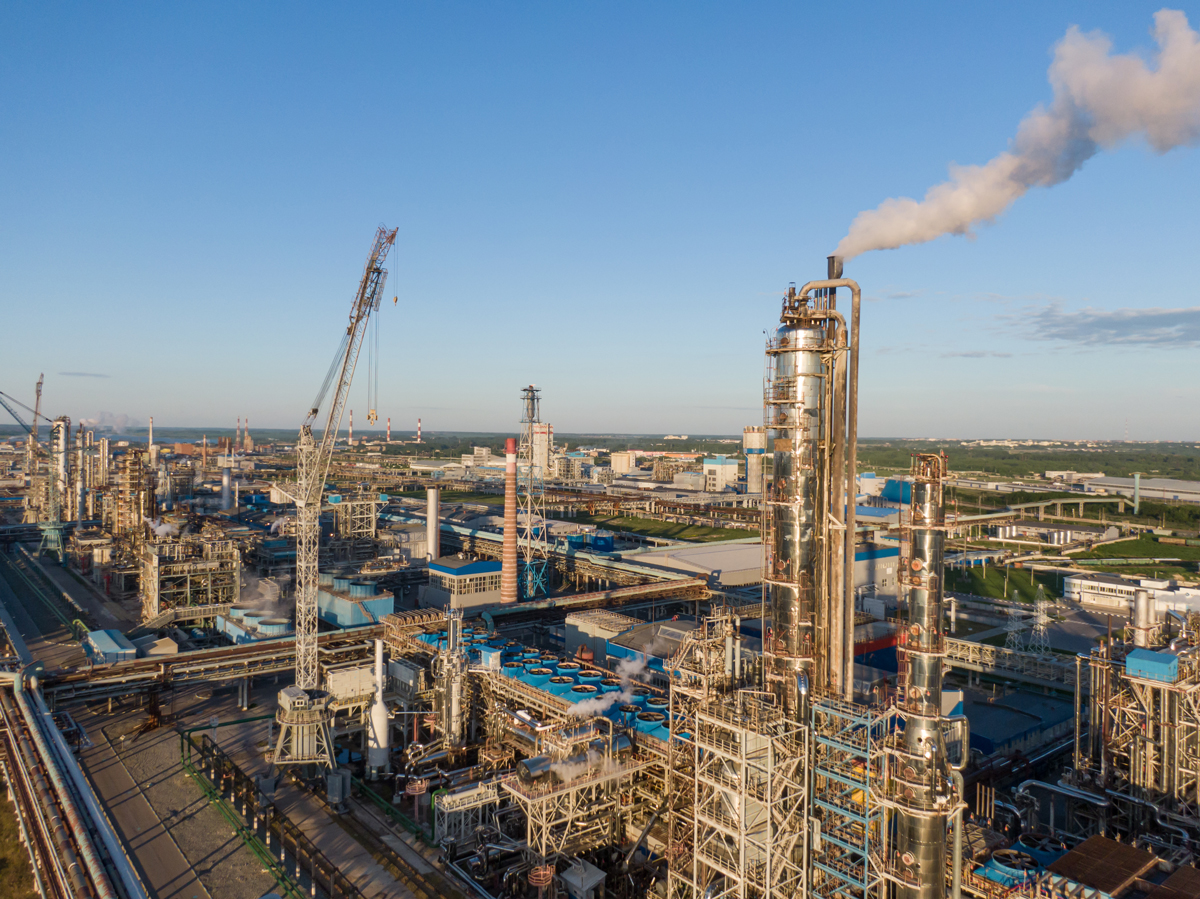
Ammonium Nitrate Production Plant
Ammonium nitrate is a chemical compound composed of ammonium ions and nitrate ions. This white crystalline solid is renowned for its dual roles. Primarily, it serves as a crucial nitrogen-rich fertilizer in agriculture, playing a vital role in promoting plant growth. Additionally, ammonium nitrate finds use in the production of explosives, particularly when combined with fuels to create an oxidizer for blasting applications. The creation of ammonium nitrate involves neutralizing nitric acid with ammonia, resulting in the formation of ammonium nitrate crystals. However, due to its potential for misuse in explosive formulations, strict regulations govern its handling, storage, and transportation in industries worldwide.
Nitric Acid Production: Nitric acid is generated through the oxidation of ammonia with a catalyst, followed by its absorption in water to create concentrated nitric acid.
Preparation of Ammonia: Ammonia gas is derived from sources like natural gas using methods such as steam methane reforming.
Neutralization Process:
Combining: Concentrated nitric acid and ammonia gas blended in a controlled setting in a reactor vessel.
Neutralization Reaction: Ammonia gas reacts with nitric acid, leading to the formation of ammonium nitrate and water.
Crystal Formation and Development:
Creating Crystals: The solution of ammonium nitrate formed during the neutralization reaction is allowed to cool and form crystals.
Seeding: Seeding crystals are introduced to encourage the growth of larger, more uniform crystals.
Separation and Drying:
Dividing: The crystals are separated from the remaining liquid solution using techniques like centrifugation or filtration.
Drying: The separated crystals undergo drying to eliminate extra moisture, resulting in the production of solid ammonium nitrate.
Granulation and Prilling:
Granulation: To produce fertilizer-grade ammonium nitrate, the solid product might undergo a granulation procedure to shape larger.
Prilling: As an alternative, prilling involves creating small spheres by allowing molten ammonium nitrate to solidify while descending through a cooling tower.
Safety Measures and Regulations: The production and distribution of ammonium nitrate faces stringent regulations due to its potential for use in explosives. Strict safety measures and security protocols are enforced to prevent misuse and ensure secure handling of the compound.
Embark on a journey into the world of advanced ammonium nitrate production with Klinger Kloppe. With a commitment to innovation, sustainability, and unmatched quality, we present a comprehensive range of solutions designed to meet your specific needs. Our cutting-edge production plants, built for durability and efficiency, redefine industry standards while prioritizing safety and environmental stewardship. Explore a realm where excellence and reliability are the cornerstones, and where our expert team stands by your side every step of the way. Welcome to the future of ammonium nitrate production with Klinger Kloppe.
High-Quality Construction: Our ammonium nitrate production plants are built using premium materials and components, ensuring durability and reliability, even in challenging environments.
Safety-Centric Design: Our plants prioritize safety, featuring multiple built-in safety features that safeguard both employees and the environment.
Flexible Financing Options: We provide a diverse array of financing choices, tailored to suit your budget and needs, facilitating your acquisition of an ammonium nitrate production plant.
Customer-Centric Service: Our experienced team of engineers and technicians is dedicated to offering top-notch customer service, providing assistance with inquiries and resolving any issues you encounter.
Customized Solutions: Recognizing the uniqueness of your business, we collaborate closely to tailor ammonium nitrate production processes that perfectly match your specific industry requirements.
Efficiency and Innovation: Our production plants are designed for optimal efficiency, employing cutting-edge technologies to produce ammonium nitrate cost-effectively and stay ahead of industry trends.
Comprehensive Support Services: Beyond production plants, we provide comprehensive support, covering everything from plant design and engineering to commissioning and start-up.
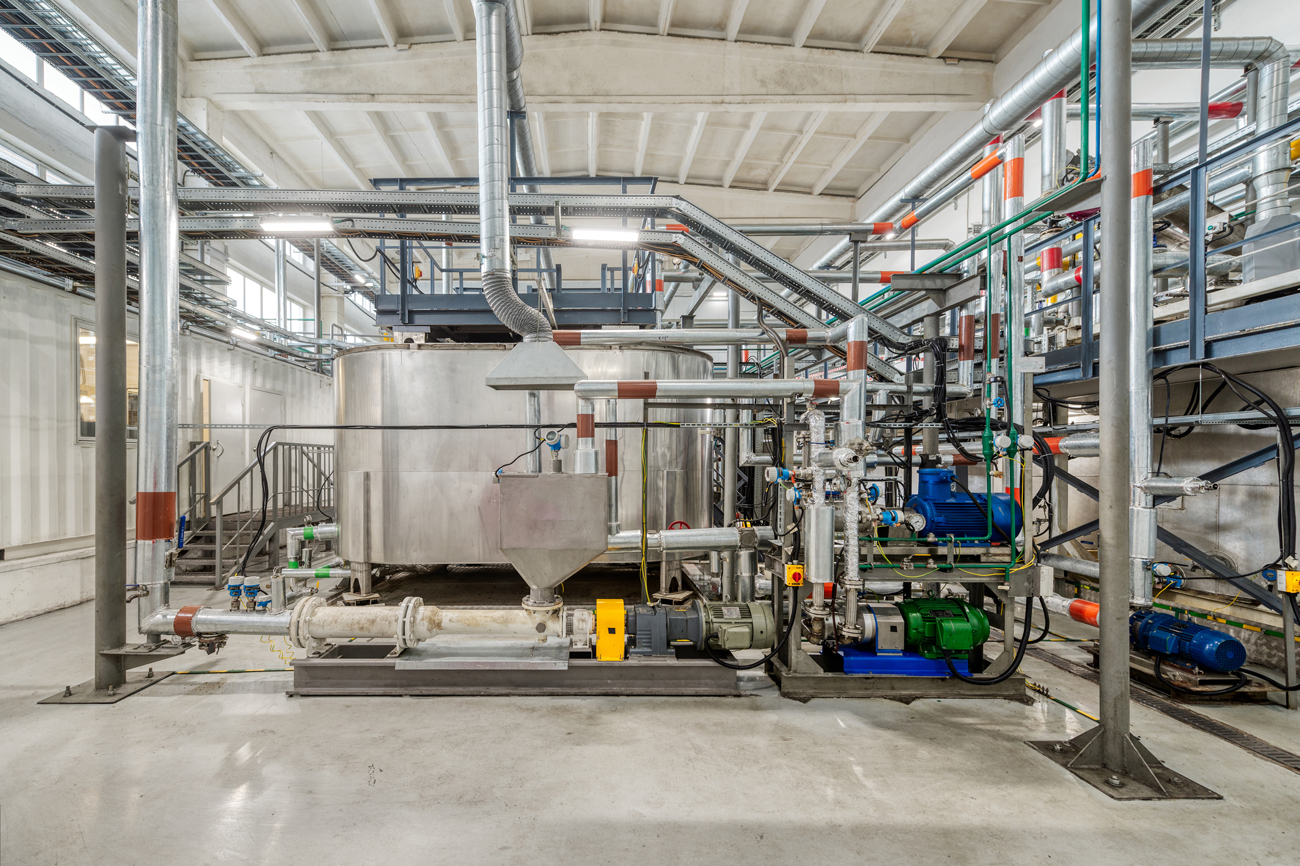
Aromatics Production Plant
Aromatics are a group of organic compounds characterized by a unique ring-shaped molecular structure called an aromatic ring, which imparts distinctive properties such as stability and resonance. Derived from crude oil through a refining process known as catalytic reforming or steam cracking, aromatics include compounds like benzene, toluene, and xylene. These compounds are essential precursors in the production of various chemicals, plastics, synthetic fibers, and fuels. The reforming process involves breaking down larger hydrocarbons and rearranging their molecular structure to yield higher concentrations of aromatics, contributing to the diverse applications and industrial significance of these compounds.
Catalytic Reforming: The hydrocarbon feedstock experiences catalytic reforming within this procedure, during which high-temperature reactions take place alongside a catalyst. This leads to the transformation of bigger hydrocarbons into more compact, desired aromatic compounds like benzene, toluene, and xylene.
Steam Cracking: The option of steam cracking is available to dismantle larger hydrocarbons into smaller molecules, including aromatics. This method involves heating the feedstock in the presence of steam under elevated temperatures, resulting in the creation of aromatic compounds.
Fractional Distillation: The blend of products derived from reforming or cracking then proceeds to undergo fractional distillation. This stage segregates the various aromatic compounds based on their respective boiling points, thereby producing distinct fractions that encompass benzene, toluene, and xylene.
Extraction and Purification: The isolated aromatic fractions from separation undergo additional purification steps to eliminate impurities and undesired secondary products. Techniques such as extraction and additional distillation might be applied to achieve elevated levels of purity.
Isolation of Benzene, Toluene, Xylene: The refined benzene, toluene, and xylene fractions are isolated as ultimate products, subsequently being stored for diverse downstream applications.
Klinger Kloppe’s aromatics production is rooted in innovation and excellence as we present a comprehensive array of solutions tailored to meet your specific requirements. Our innovative production plants is meticulously designed for both efficiency and reliability, redefine industry norms while upholding safety and environmental responsibility. Embark on a journey where industry-leading expertise and customer-centric dedication converge to create the future of aromatics production. Welcome to the forefront of aromatic innovation with Klinger Kloppe.
Tailored Solutions for Your Needs: Our aromatics production plants are custom designed to cater to your specific requirements. With a range of plant sizes and configurations, you can select the ideal setup for your production needs.
Efficiency at the Forefront: Incorporating cutting-edge technology, our aromatics production plants are exceptionally efficient, ensuring cost-effective and optimized aromatic production processes.
Comprehensive Support Services: Beyond production plants, we extend a wide array of support services. From plant design and engineering to commissioning and start-up, we provide holistic assistance.
Premium Quality Materials: Our aromatics production plants are crafted using top-notch materials and components. This commitment ensures their durability and reliability, even in challenging environments.
Safety-Centric Design: Our plants prioritize safety, boasting multiple safety features that safeguard our workforce and the environment alike.
Flexible Financing Solutions: Klinger Kloppe presents a diverse range of financing options, making the acquisition of an aromatics production plant hassle-free. We tailor financing to fit your budget and requirements.
Customer-Centric Excellence: We're dedicated to delivering exceptional customer service. Our skilled team of engineers and technicians is readily available to assist you with any inquiries or challenges you might encounter.

Ethylene Plant
Ethylene, a vital hydrocarbon compound plays a fundamental role in the chemical industry as a building block for various products. Derived from feedstocks like natural gas or petroleum, the production of ethylene involves steam cracking, where hydrocarbons are heated to high temperatures, causing them to break apart. Ethylene is then separated from other products, purified, and used as a precursor for a wide range of materials, including plastics, synthetic fibers, and chemicals, making it a cornerstone of modern industrial processes.
Steam Cracking:
Cracking Furnace: The feedstocks, preheated and mixed with superheated steam, enter cracking furnaces. Within these furnaces, the mixture undergoes exposure to high temperatures alongside steam.
Cracking Reaction: The elevated temperatures result in the fragmentation hydrocarbon molecules, forming smaller molecules like ethylene, propylene, and other byproducts.
Thermal Cracking: This procedure is significantly endothermic. The required energy is generated by burning a portion of the cracked products in the furnace.
Cooling and Separation:
Quench Tower: A quench tower employs cold oil or other cooling agents to swiftly cool down the cracked products and prevent further reactions. This aids in both separation and preventing extended reactions.
Separation Columns: The cracked product mixture journeys to separation columns. These columns sort components according to their boiling points, effectively isolating ethylene from byproducts such as propylene and butenes.
Purification and Compression:
Ethylene Purification: Further refinement of the isolated ethylene stream occurs to eliminate impurities like hydrogen, acetylene, and undesirable compounds.
Compression: The purified ethylene undergoes compression to attain the required pressure for storage, transportation, or subsequent processes.
Product Dissemination:
Storage or Transportation: Compressed ethylene finds storage in tanks or is conveyed through pipelines, serving a range of industrial applications.
Subsequent Stages: Ethylene's versatility as a foundational element is harnessed in the production of plastics, synthetic fibers, and various chemicals. It functions as a precursor to diverse products in downstream industries.
As pioneers in ethylene production, Klinger Kloppe leads the charge in redefining possibilities and setting new standards for excellence. With a team of visionary engineers, we're not just crafting ethylene; we're shaping the very landscape of industrial evolution.
Innovative Engineering Leadership: Klinger Kloppe stands as a beacon of innovation in the realm of ethylene production. Our team of visionary engineers thrives on pushing the boundaries of what's possible, bringing you cutting-edge solutions that set new industry benchmarks.
End-to-End Excellence: From concept to execution, we offer a comprehensive approach. Our journey begins by understanding your unique requirements, and it continues with meticulous planning, seamless implementation, and post-project support that ensures your operations run flawlessly.
Customization at its Core: Klinger Kloppe's ethylene production solutions are tailor-made to your specific industry, ensuring that our processes integrate seamlessly with your existing systems and objectives.
Sustainability Woven In: Klinger Kloppe is dedicated to a greener, more sustainable future. Our ethylene plant embodies this commitment through advanced eco-friendly designs, waste reduction practices, and energy-efficient processes, allowing you to meet your sustainability goals.
Global Impact, Local Commitment: While our innovations have a global reach, we understand the importance of local partnerships. With Klinger Kloppe, you'll experience the dedication and personalized attention of a local team, backed by a worldwide reputation for excellence.
Reliability and Quality Assurance: When you choose Klinger Kloppe, you're choosing reliability. Our ethylene plant delivers consistent, high-quality results that you can depend on, ensuring your operations remain uninterrupted and your products meet the highest standards.
Collaborative Approach: Klinger Kloppe's team collaborates closely with your experts, leveraging our collective knowledge to create solutions that drive your success.
Future-Ready Solutions: Our ethylene production plant equips you with future-ready solutions that not only meet current demands but also position you for growth in a dynamic landscape.
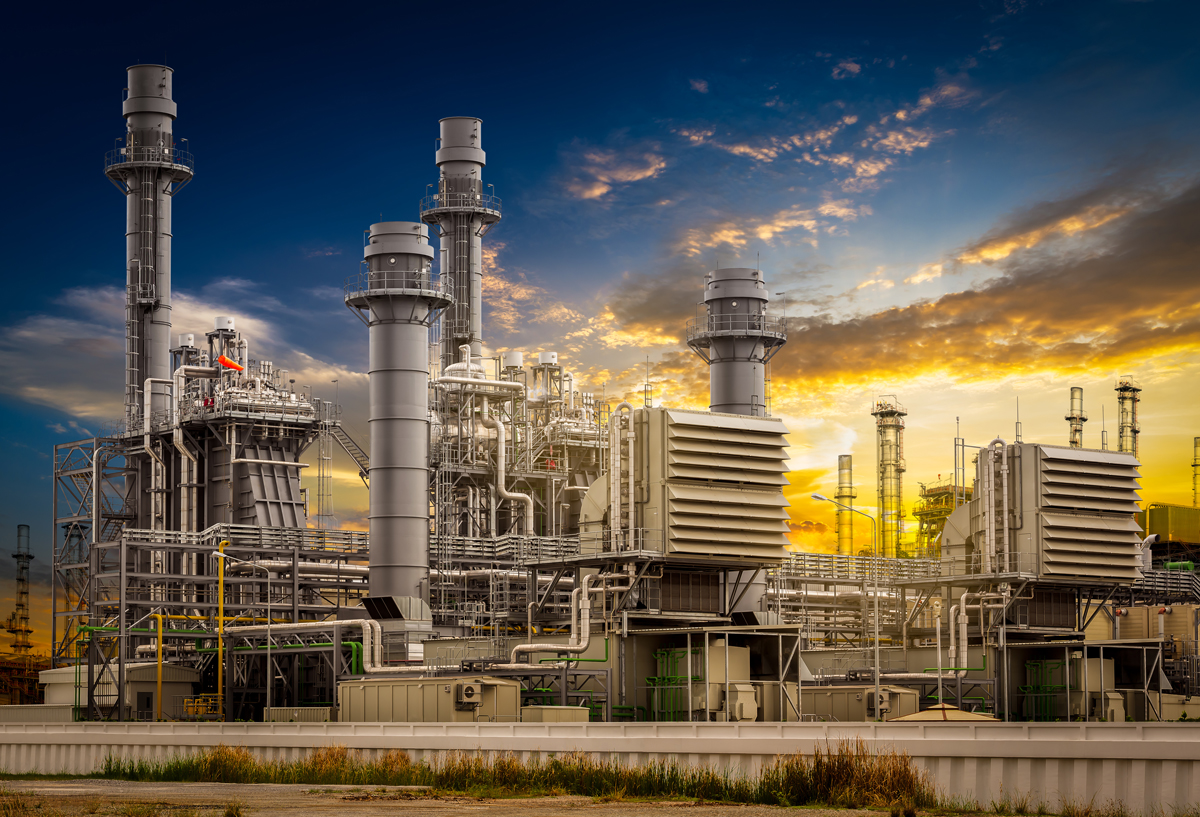
Power Plants
A power plant is an industrial facility that transforms various energy sources, such as fossil fuels, nuclear reactions, or renewable resources like sunlight, wind, and water, into electrical energy. Through processes like combustion, nuclear fission, or harnessing natural forces, power plants generate heat, which is then used to produce steam that drives turbines connected to generators. As these turbines spin, they convert mechanical energy into electricity through electromagnetic induction. Power plants are crucial for supplying electricity to homes, businesses, and industries, supporting modern lifestyles and technological advancements. The types of power plants vary based on energy sources, with each playing a distinct role in meeting energy demands and contributing to the global energy landscape.
Energy Source Intake: Power plants obtain their energy source, which could be fossil fuels like coal, oil, or natural gas, nuclear fuel rods, sunlight for solar power, wind for wind power, flowing water for hydroelectric power, or Earth's heat for geothermal power.
Energy Conversion: The energy source is converted into heat energy through processes like combustion (for fossil fuels), nuclear fission (for nuclear plants), or harnessing natural forces (for renewables).
Heat Generation: The heat energy is used to generate steam. In fossil fuel and nuclear plants, the heat is used to boil water and create high-pressure steam.
Steam Drives Turbines: The high-pressure steam is directed onto turbines. The force of the steam causes the turbines to spin rapidly.
Electricity Generation: The spinning turbines are connected to generators. The movement of the turbines generates a rotating magnetic field within the generator, which produces electricity through electromagnetic induction.
Voltage Conversion: The electricity generated is at a low voltage. Transformers are used to increase the voltage for efficient transmission over long distances.
Distribution and Transmission: The electricity is sent to a substation, where it is further distributed to power lines for transmission to homes, businesses, and industries.
End Use: Electricity travels through power lines and reaches various end-users, where it powers lights, appliances, machines, and other devices.
Waste Heat Management: Waste heat generated during the process is captured and utilized for other purposes, such as heating buildings or industrial processes. This is common in combined heat and power plants.
Environmental Controls: Modern power plants incorporate environmental control technologies to minimize emissions and reduce their impact on the environment. This includes technologies like scrubbers for removing pollutants from flue gases.
Experience the pinnacle of power generation with Klinger Kloppe, the global frontrunner in delivering unparalleled power plant solutions. Our power plants embody the epitome of quality and efficiency, meticulously designed to surpass the highest industry standards. Offering exceptional adaptability, our solutions seamlessly evolve alongside your dynamic needs. We are unwaveringly committed to providing an unrivaled fusion of top-tier products and services, backed by a team of experienced engineers and technicians devoted to propelling you towards your energy aspirations.
Innovative Engineering: At Klinger Kloppe, we're trailblazers in power plant technology. Our solutions merge visionary engineering with groundbreaking innovation to redefine energy generation.
Customized Solutions: Your energy needs are unique, and our power plants are tailor-made to fit seamlessly. From sizing to configuration, Klinger Kloppe ensures your power supply aligns perfectly with your requirements.
Sustainable Future: We're committed to a greener planet. Klinger Kloppe's power plants embody sustainability, harnessing efficiency, and renewable resources to reduce environmental impact.
Cutting-Edge Technology: Our power plants are engineered with the latest advancements, ensuring optimal efficiency and performance. From fossil fuels to renewables, we deliver results that set industry standards.
Comprehensive Support: Beyond power plant solutions, Klinger Kloppe offers end-to-end support, from design to implementation, ensuring smooth operations and lasting performance.
Built to Last: Quality matters. Our power plants are crafted with top-tier materials and components, guaranteeing durability and reliability even in the most demanding environments.
Safety Priority: Safety is embedded in our designs. Klinger Kloppe's power plants incorporate advanced safety features, protecting both our team and the environment.
Flexible Financing: We understand your investment concerns. Klinger Kloppe offers a range of financing options, making cutting-edge power generation accessible without compromising on quality.

Waste Water Treatment Plant
Wastewater treatment is the essential process of removing contaminants and pollutants from wastewater to ensure its safe disposal or return to the environment. Beginning with collection and conveyance, larger solids are removed in preliminary treatment, followed by the settling of heavier solids and skimming of greases in primary treatment. In secondary treatment, microorganisms break down organic matter, and the treated water is separated from microbial biomass. Tertiary treatment refines water quality through advanced filtration, disinfection, and nutrient removal. Sludge collected undergoes treatment, and the resulting effluent is discharged or reused for non-potable purposes. This intricate process safeguards public health, environmental well-being, and water resources sustainability.
Collection and Conveyance: Wastewater is collected from various sources through sewer systems and transported to a treatment facility.
Preliminary Treatment: Large debris and solids are removed using screens and grit chambers to prevent damage to downstream equipment.
Primary Treatment: Wastewater is settled in primary clarifiers, allowing heavier solids to settle as sludge and greases to rise as scum.
Secondary Treatment (Biological Treatment): Microorganisms in aeration tanks break down organic matter, converting it into microbial biomass and carbon dioxide. Secondary clarifiers separate treated water from microbial biomass.
Tertiary Treatment (Advanced Treatment): Further treatment involves additional filtration, disinfection, and nutrient removal to refine water quality.
Sludge Treatment: Sludge collected from primary and secondary treatment undergoes digestion to reduce volume and pathogens, with the treated sludge used as a soil conditioner or further processed for disposal.
Effluent Discharge or Reuse: The treated wastewater (effluent) can be discharged into water bodies if it meets standards or reused for non-potable purposes like irrigation.
At Klinger Kloppe, our wastewater treatment evolves into a tailored journey of innovation and efficiency. Our unwavering commitment to redefining wastewater treatment solutions takes center stage as we introduce you to a world of flexibility, quality, and unparalleled support. Embark on a transformative partnership as we dive into the heart of our wastewater treatment plants, designed to surpass your expectations, and shape a more sustainable future.
Tailored Solutions: Klinger Kloppe's wastewater treatment plants are meticulously designed to cater to specific customer needs, offering a diverse range of plant sizes and configurations to ensure a perfect fit for wastewater treatment requirements.
Cutting-Edge Efficiency: Our wastewater treatment plants excel in efficiency. Incorporating the latest technology, we guarantee the most cost-effective and resource-efficient wastewater treatment processes.
Comprehensive Support: Beyond plant solutions, Klinger Kloppe provides an extensive array of support services. From initial plant design to commissioning and start-up, we're here to guide you through every step.
Built to Last: Quality matters, which is why our wastewater treatment plants are crafted using top-quality materials and components. This commitment ensures durability and reliability, even in challenging environments.
Safety First: Safety is paramount in our designs. Klinger Kloppe's wastewater treatment plants come equipped with a suite of safety features, safeguarding both our team and the environment.
Flexible Financing: We understand the financial aspect of investments. Klinger Kloppe offers a broad spectrum of financing options, tailored to suit your budget and needs, making wastewater treatment accessibility seamless.
Exceptional Customer Service: Klinger Kloppe's experienced team of engineers and technicians provides exceptional customer service. We're readily available to address any questions or challenges you may encounter.

